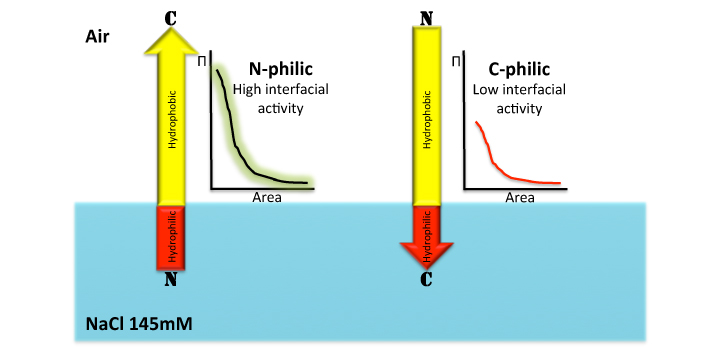Ambroggio EE et al. 2016, Colloids Surf B Biointerfaces.
The protein’s primary structure has all the information for specific protein/peptide folding and, in many cases, can define specific amphiphilic regions along molecules that are important for interaction with membranes. In order to shed light on how peptide sequence is important for the surface properties of amphiphilic peptides, we designed three pairs of peptides with the following characteristics: (1) all molecules have the same hydrophobic residues; (2) the couples differ from each other in their hydrophilic amino acids: positively, negatively and non-charged; (3) each pair has the same residues (same global molecular hydrophobicity) but the primary structure is reversed in comparison to its partner (retro-isomer), giving a molecule with a hydrophilic N or C-terminus and a hydrophobic C or N-terminus. Using the Langmuir monolayer approach, we observed that sequence reversal has a central role in the lateral stability of peptide monolayers, in the ability of the molecules to partition into the air–water interface and in the rheological properties of peptide films, whereas the peptide’s secondary structure, determined by ATR-FTIR, was the same for all peptides. Reversing the sequence also gives a differential way of peptide/lipid interaction when peptides are in the presence of POPC lipid bilayers. Our results show how sequence inversion confers a distinctive peptide surface behaviour and lipid interaction for molecules with a similar structure.
Authors: Ambroggio EE, Caruso B, Villarreal MA, Raussens V, Fidelio GD.
Article: Ambroggio EE et al., Colloids Surf B Biointerfaces. 2016, 139:25-32



